Simulation of deep excavations opencast using the finite element method
DOI:
https://doi.org/10.38017/2390058X.70Keywords:
open pit excavation, plate type elements, soft soils, finite element method, deflections.Abstract
In this document the behavior is simulated within the criterion of service limit states of deep excavation using the finite element method. The methodology of running thesis entitled: Analysis of deformation in open pit excavations in soft soils of Bogota is presented, and the results of an application example where that considers a deep open pit with a section type B Cut & Cover. With the Hardening soil model the behavior of soft soils of the city of Bogota, and structural elements such as walls and slabs screens are simulated simulated props Plate type as elastic elements. For characterization of the soil and the elements of the excavation, information available from studies and designs for the first subway line, section IV, North Canton sector collected. The modeling is performed in 8 stages simulating the construction process and consequently the results show deflections wall and settlements in the surrounding buildings.
Author Biography
Rubby Vanesa Ballesteros Granados, Universidad Pedagógica y Tecnológica de Colombia UPTC
References
[1] E. Moya, R. Salazar, G. A. Gómez y F. Salazar, Excavaciones en Condiciones Complejas, Bogotá, Colombia: Escuela Colombiana De Ingeniería, 2014.
[2] H. G. Kempfert and B. Gebreselassie, Excavations and Foundations in Soft Soils, Kassel, Germany, Springer-Verlag Berlin Heidelberg, 2006.
[3] E. E. Rodríguez Granados, “Ejemplos de aplicación del piezocono CPTu en proyectos en Colombia”, curso de exploración y caracterización del subsuelo con técnicas avanzadas. (7-9: 2015: Santa Fé de Bogotá D.C, Escuela colombiana de ingeniería), Memorias de curso de exploración y caracterización del subsuelo con técnicas avanzadas, 2015, pp. 1-90.
[4] P. K. Robertson and K.L. Cabal Robertson, Guide to cone penetration testing for Geotechnical Engineering, 6ta ed. Signal Hill, California: Gregg Drilling & Testing, Inc., 2014.
[5] Instituto de desarrollo urbano IDU, Información Geotécnica PLBM Tramo IV [En línea]. Disponible en: http://app.idu.gov.co/seccion_metro_ASP/IntenasMain/primeraLinea.asp.
[6] C. A. Romero Porras, “Análisis de variación de esfuerzos durante excavaciones en suelos blandos”, M.S tesis, Cundinamarca, Escuela Colombiana de Ingeniería, Bogotá D.C, Colombia, 2014. [En línea]. Disponible en: https://es.scribd.com/document/321419673/ANALISIS-DE-VARIACION-DE-ESFUERZOS-DURANTE-EXCAVACIONES-EN-SUELOS-BLANDOS-pdf
[7] D. A. Olaya, “Criterios Geotécnicos para el diseño de excavaciones en suelos blandos mediante el método de elementos finitos”, M.S tesis, Cundinamarca, Universidad Nacional de Colombia, Bogotá D.C., 2015. [En línea]. Disponible en: https://repositorio.unal.edu.co/bitstream/handle/unal/55191/1121827533.2015.pdf?sequence=1&isAllowed=y
[8] Alcaldía mayor de Bogotá, Decreto 523 de 16 diciembre, 2010 por el cual se adopta la microzonificación de Bogotá. [En línea]. Disponible en: https://www.scg.org.co/wp-content/uploads/DECRETO-523-DE-2010-MICROZONIFICACION-BOGOTA.pdf
[9] Reglamento Colombiano de construcción sismo resistente. NSR-10, Capítulo A, requisitos generales de diseño y construcción sismo resistente caracterización, Bogotá, Asociación Colombiana de Ingeniería Sísmica. AIS, 2010. [En línea]. Disponible en: https://www.unisdr.org/campaign/resilientcities/uploads/city/attachments/3871-10684.pdf
[10] A. Nieto Leal, J. Camacho Tauta y E. Ruiz Blanco, “Determinación de parámetros para los modelos elastoplásticos Mohr Coulomb y Hardening Soil en suelos arcillosos”, Revista de Ingeniería Universidad de Medellín, Vol. 8, no. 15, pp. 75-91, Jul.-Dic., 2009. [En línea]. Disponible en: https://revistas.udem.edu.co/index.php/ingenierias/article/view/63
[11] T. Nghia Do, C. Yo Ou and R. Peng Chen, “A study of Failure Mechanisms of Deep Excavations in Soft Clay Using the Finite Element Method”, Computers and Geotechnics, vol. 73, pp. 153-163, Dic., 2015. doi: http://dx.doi.org/10.1016/j.compgeo.2015.12.009
[12] T. L. Gouw, “Common Mistakes on the Application of Plaxis 2D in Analyzing Excavation Problems”, ResearchGate, vol. 9, no. 21, pp. 8291-8311, Ene., 2014. [En línea]. Disponible en: https://edisciplinas.usp.br/pluginfile.php/4380775/mod_resource/content/2/Plaxis-CommonMistake-Excavation.pdf
[13] Plaxis, “Plaxis bv (Version 8) Materials models manual,” Delf, Paises bajos, 2004.
[14] P. K. Robertson and K.L. Cabal Robertson, “To Cone Penetration Testing”, curso de exploración y caracterización del subsuelo con técnicas avanzadas (7 - 9 Mayo, 2015: Bogotá D.C, Escuela colombiana de ingeniería). Memorias de curso de exploración y caracterización del subsuelo con técnicas avanzadas, 2015. 133p.
How to Cite
Downloads
Downloads
Published
Issue
Section
License
Copyright (c) 2017 Ciencia, Innovación y Tecnología

This work is licensed under a Creative Commons Attribution-NonCommercial-ShareAlike 4.0 International License.




